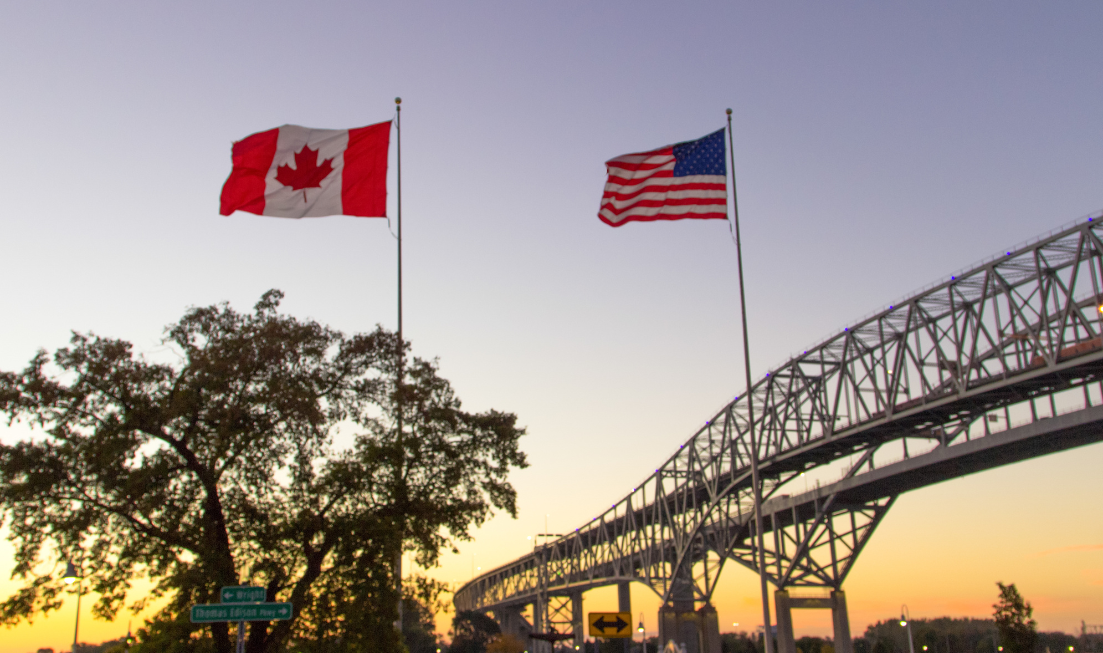Trump tariff threat: Canada needs to prepare for the worst, expert warns

Canada will have to adapt, as always, to the ‘American 800-pound gorilla’ if the U.S. president-elect introduces steep tariffs, says DeGroote School of Business professor William Huggins. (Adobe stock image)
BY Andrea Lawson
November 27, 2024
Donald Trump is looking to tariffs as part of his plan to bring a “manufacturing renaissance” to the United States when he returns to the White House next year.
The president-elect has vowed to impose a 25 per cent tariff on all goods entering the U.S. from Canada and Mexico, unless the two countries clamp down on drugs and people crossing the border illegally.
The tariff plan, which was posted on social media, has raised concerns, as well as questions over possible exemptions and room to negotiate.
While the details are unclear, tariffs would hit the Canadian economy hard and businesses, industries and consumers should prepare for the worst, says William Huggins, assistant professor of finance and business economics at the DeGroote School of Business.
Huggins explains how steep tariffs might affect Canadians and reverse decades of economic integration between the two countries.
How do you think a 25 per cent tariff would impact Canada?
It will be quite bad if it happens. Over the summer, economists estimated a 2.4 per cent decline in GDP over two years from a 10 per cent tariff. This would have roughly double the impact, which would erase all the anticipated growth we were looking forward to.
Now we are staring down the barrel of an even deeper recession than the one we were about to climb out of.
Expect to see unemployment rise and import prices, too. Even if we can convince America to welcome us back into the fold, they may require us to adopt their tariff policies to prevent exporters from using Canada as a back door to the U.S. market.
The Canadian economy has heavily integrated with the United States for the last 30 or so years since NAFTA.
Pre-NAFTA, we had industrial policies that required American companies to set up Canadian subsidiary and produce in Canada — that’s how we got things like GE Canada or General Motors Canada.
NAFTA allowed Canada and the United States to integrate production, so we no longer needed to have those Canadian entities. We were able to allow American companies to simply produce in America and ship to us.
The possibility of the U.S. introducing a broad tariff would have an immediate impact on all the productivity gains we’ve had from integrating. With those productivity gains gone, costs will no doubt rise. It will reduce the overall degree of productivity by increasing friction in the model.
Canadians will likely be poorer from it as a result. Anticipated cuts to interest rates in 2025 might very reasonably be off the table.
You have a passion for financial and economic history – can you put these tariffs into historical context?
These sorts of tariffs between America and Canada have been a regular feature over the last 160 years of our history. Sometimes Americans are very protectionist, and Canada needs to find a way to make that work. Other times, Americans are very open to economic integration, and we need to find ways to make that work.
Historically, 25 per cent is quite high — we haven’t seen anything like it since the depression.
It’s bad economics, frankly, and will cost America, but it will hurt us more than them, and that appears to be the point.
It may be a negotiating tactic to force us to end “supply management” in several industries but in my opinion, wishful thinking isn’t a strategy — we need to prepare for the worst.
What’s the move for Canada in this?
Tariffs will create challenges for a lot of export industries, whether we’re looking at agricultural goods or mining goods, or we’re looking even at energy goods or manufactured goods.
Canada is always dancing in orbit around the American 800-pound gorilla. We are a small country economically in orbit around a much larger one. If they decide to change the rules, we simply have to learn to adapt, no matter how painful that might be.
We spent the last 35 years integrating with them on purpose and now the rug is being pulled out from under us.
If this isn’t a bluff, and if the tariffs are sustained, it’s going to lead to job losses (related to fewer sales to the U.S.) and more inflation (from the high import costs once we retaliate).
We haven’t faced this type of “reorganize all your trade” since 1866, when the 1854 Reciprocity Treaty was abrogated by the U.S.
There isn’t anyone with living memory of how this goes — and certainly it will be different this time — so it will be time for our negotiators to brush up on their economic history.


